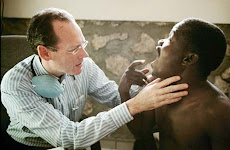Chapter 22 Questions
Tiny Critters, Big Impacts
1. What is Dover, England known for and how did this form?
a. How was the Hagar Qim temple formed?
b. What does Phytophthora infestans infect?
c. What does P.ramorum infect?
An Evolutionary Road Map
2. Describe the characteristics of protists.
Parabasalids and Diplomonads
3. What does protozoa mean?
a. What are two of the most evolutionary distant groups of Protists?
b. Describe the characteristics of the Parabasalids.
c. Describe the characteristics of the Diplomonads.
d. Where does Trichonympha campanula live?
e. Where does Trichomonas vaginalis live and cause?
f. What is intriguing about Giardia lamblia and where is it common and what does it cause?
g. What is Giardiasis caused by and what are its symptoms?
Euglenoids and Kinetoplastids
4. Describe the charateristics of the euglenoids.
a. How do euglenoids move and what does the pellicle do?
b. What is the function of the contractile vacuole?
c. How do euglenoids reproduce?
5. Describe the characteristics of kinetoplastids.
a. Where are Trypanosoma and Leishmania notorious agents of disease and what are their primary hosts?
b. What does T. brucei cause? What are the symptoms?
c. What does T.cruzi cause in South America and Mexico? What chronic symptoms may develop?
d. How is L. Mexicana transmitted and what can result from this disease?
e. What causes skin leishmaniasis, who has gotten this disease, and how is it treated?
Forams and Radiolarians
6. Describe the characteristics of foraminiferans.
a. How are foraminiferan shells useful to climatologists?
7. Describe the characteristics of radiolarian.
a. What are plankton?
b. Where do dense populations of radiolarian reside?
Ciliated Alveolates
8. Describe the ciliates.
a. Describe Paramecium.
b. What is the function of the ciliate’s pellicle?
c. What is the function of the trichocyts?
d. How do ciliates reproduce?
Flagellated Alveolates
9. Describe the dinoflagellates.
a. What do all dinoflagellates store in their alveoli and what is the function of this?
b. What is an algal bloom? And which species can tint the water red?
c. What happens when Karenia brevis blooms along the Gulf of Mexico and Atlantic Seaboard?
d. What are the symptoms of neurotoxic shell fish poisoning and how is it caused?
10. Describe the characteristics of apicomplexans.
Malaria and the Night Feeding Mosquitoes
11. What does malaria mean?
a. Which gender of mosquito can cause malaria?
b. What are symptoms of malaria?
c. Why can’t gametocytes of Plasmodium mature in humans?
d. Where has malaria traditionally been prevalent and what are three causes for its recent appearance and rise in North America and elsewhere.
e. What is a vaccine?
f. How often does a child in Africa die of Malaria?
The Mostly Photosynthetic Stramenopiles
12. Describe the chrysophytes.
a. Describe golden algae.
b. Describe yellow green algae.
c. Describe the cocoolithophores.
d. Describe the diatoms.
e. Why are diatoms considered pastures of the sea?
f. Describe brown algae.
The Colorless Stramenopiles
13. Describe the oomycotes.
a. Describe water molds.
b. What did P.infestans cause in Ireland?
Red Algae
14. Describe the characteristics of red algae.
a. Where do red algae live?
b. Where does agar come from and what is it used for?
Green Algae
15. Describe the characteristics of green algae.
a. What are the two groups of green algae?
b. What are the closest relatives of plants?
Amoeboid Cells at the Crossroads
16. What is a pseudopod?
a. Describe amoebas.
b. Describe slime molds.
c. What does cyclic AMP induct solitary amoeboid cells to do? What is the significance of this?
Subscribe to:
Post Comments (Atom)




No comments:
Post a Comment